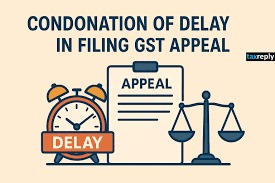Valmiki J Mehta, J.@mdashThis writ petition is filed by one Sh. Rakesh K. Chaudhary, a Teacher in the respondent No. 2/school, namely, N.D.M.C. Navyug School, Peshwa Road, New Delhi, seeking the pay-scale of Rs. 2000-3500 with retrospective effect from the date of his appointment on 08.11.1989. The essential cause of action in the writ petition is the claim of the petitioner to pay-scale of Rs. 2000-3500 instead of the pay-scale of Rs. 1640-2900 in which the petitioner was appointed. The claim is on the ground that Physics Teachers in Navyug School of the respondent No. 1/N.D.M.C. working in the Sarojini Nagar Branch are given pay-scales of Rs. 2000-3500. The petitioner, therefore, in sum and substance states that since he is a Physics Teacher teaching in Navyug School, Peshwa Road, he should get the same pay-scale which a Physics Teacher in the Navyug School, Sarojini Nagar is getting.
2. The application of doctrine of ''equal pay for equal work'' requires inter alia that qualification for the posts to which parity is claimed has to be same or more or less identical, the duties to be performed should also be same or more or less identical, and, the promotion hierarchy aspect qua the two channels of the two posts must more or less be similar or identical.
3. This writ petition was argued in detail on 08.04.2013 when the following order was passed:
Counsel for respondents No. 2 and 3 has filed an additional affidavit. Counsel for the petitioner prays for and is granted four weeks'' time to file reply to the additional affidavit. Rejoinder thereto, if any, be filed within four weeks thereafter.
A prima facie reading of the petition shows that the petitioner has not made enough averments for justifying the claim for equal pay for equal work with respect to the teachers in Sarojini Nagar School with whom parity is claimed.
List on 15th July, 2013.
4. Respondents have pursuant to the said order filed the affidavit dated 08.04.2013 and the same reads as under:
ADDITIONAL AFFIDAVIT ON BEHALF OF THE RESPONDENTS NO. 2 AND 3
I, S.R. Spolia wife of Shri D.M. Spolia, C/o Navyug School Educational Society, Hanuman Road, New Delhi-110 001, do hereby solemnly affirm and declare on oath as under:
1. That I am presently working as the Deputy Director of Navyug School Educational Society (NSES, for short). I have derived knowledge about the present case from the records of NSES maintained in the normal course of its business, as also from the officers dealing with the present case. Therefore, I am competent to depose and swear the present affidavit.
2. That the petitioner was appointed as a Physics teacher in Peshwa Road Navyug School in the year 1989 in the pay scale of 1640-2900. The said school had a separate and independent management/Board of Governors at that time.
The working hours in the Peshwa Road school were upto 1:45 P.M. The said school was a secondary school (upto Class X) at that time. Therefore, the petitioner was appointed to teach Class IX at that time since Class X had not even commenced at that time. In fact, Class X started in the year 1990.
3. Navyug School in Sarojini Nagar was a senior secondary school (upto Class XII) in the year 1989. The same teachers were teaching Classes IX, X, XI and XII. It had a separate and independent management/Board of Governors.
There was an additional requirement of three years experience of teaching intermediate/senior secondary classes, for appointment as a teacher in Sarojini Nagar School. The same was not the requirement for the Peshwa Road School in the year 1989. Even otherwise, the petitioner did not have three years experience of teaching intermediate/senior secondary classes when he was so appointed for teaching Class IX in the year 1989.
The working hours of Sarojini Nagar School were always more than the Peshwa Road School.
The said teachers from Class IX to Class XII in Sarojini Nagar School were appointed in the pay scale of 2000-3500.
4. In the year 1991-92, Peshwa Road School became a senior secondary school (upto Class XII), and that Class XI was started in the said School in the year 1991. Therefore, there arose requirement for teachers teaching senior secondary school students. The NSES started the process for appointment of PGT teachers, including Physics teacher/s, for teaching the students of Classes XI and XII. The petitioner had applied for the same as a direct candidate, but was not successful. Therefore, the petitioner was to teach secondary classes (upto Class X).
5. In the year 1999, the petitioner was promoted as PGT (Physics) to teach Classes XI and Class XII. His pay scale on promotion also became 200-3500, the same which was being paid to teachers at the Sarojini Nagar School. Since his appointment as PGT (Physics) in 1999, the petitioner has been teaching senior secondary classes. Presently, the petitioner has been teaching at Lodhi Road Navyug School.
6. The timings of both the Schools, at Sarojini Nagar and Peshwa Road, became upto 2:30 P.M. in the year 2004.
5. Petitioner was given time right from April till today to file response of this additional affidavit of the respondents but the response has not been filed. Obviously, the response could not be filed because the factual averments as stated in the additional affidavit cannot be controverted.
6. The fact of the present case, therefore, shows that the appointment as a Physics Teacher in Navyug School at the Sarojini Nagar Branch was different than the appointment of a Physics Teacher at the Peshwa Road Branch where the petitioner was appointed. The prominent differences are:
(i) The appointment as a Physics Teacher at the Sarojini Nagar Branch required three years experience and which experience was not required for the other Navyug Schools operating under the respondent No. 1, including the Peshwa Road school where the petitioner was appointed.
(ii) The Sarojini Nagar Branch of the Navyug School was a full day boarding school and, therefore, the teachers had long working hours because the timing of the school was from 8.00 A.M. to 5.00 P.M. The timing in the Peshwa Road school was only upto 1.45 P.M. at the time when the petitioner was appointed.
(iii) In 1989 when petitioner was appointed, the Peshwa Road School Branch had only classes upto class IX and teachers were, therefore, expected to teach only upto class IX whereas the Sarojini Nagar school had classes till class XII. Teachers, therefore, who were appointed in the Sarojini Nagar Navyug Branch school had duties to teach classes upto class XII whereas the Physics Teachers such as the petitioner, who was appointed at Peshwa Road school had only to teach upto class IX.
(iv) In the year 1991-92 when the Peshwa Road school became a Senior Secondary School i.e. upto class XII recruitment process started for appointment to the post of PGT (Physics) for teaching students of class XI and XII. Petitioner did apply for the same but was not successful. Petitioner therefore, was to teach only upto Secondary classes i.e. upto class X. Petitioner subsequently in the year 1999 got promotion to the post of PGT (Physics) and accordingly his scale then became Rs. 2000-3500.
7. It is, therefore, clear that merely because the schools run under the same Management, and which schools have Physics Teachers the same cannot automatically mean that Physics Teachers of two different schools must necessarily have the same grades/pay-scales. In view of the differences between the Peshwa Road school where the petitioner was appointed as a Physics Teacher and the Sarojini Nagar Branch of the Navyug School as stated above, petitioner was consciously being given and accepting the pay-scale of Rs. 1640-2900, hence in view of the facts of the present case, petitioner cannot allege discrimination or claim applicability of the principle of ''equal pay for equal work''. In view of the above, I do not find any merit in the writ petition which accordingly dismissed, leaving the parties to bear their own costs.

